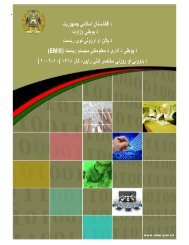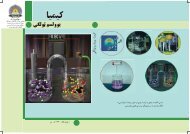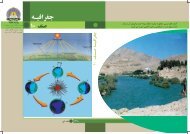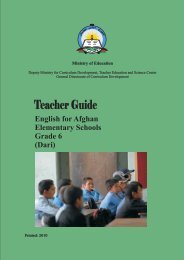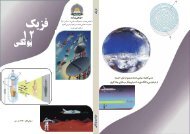Ministry of Education Directorate of EMIS
Ministry of Education Directorate of EMIS
Ministry of Education Directorate of EMIS
Create successful ePaper yourself
Turn your PDF publications into a flip-book with our unique Google optimized e-Paper software.
<strong>Ministry</strong> <strong>of</strong> <strong>Education</strong> Summary Report <strong>of</strong> <strong>Education</strong> Situation ,Year 1388<br />
partners including NGOs, donors and other government ministries to obtain a broader view <strong>of</strong> the<br />
information needs for policy formulation and monitoring. Only limited feedback was received and<br />
this was not sufficient to finalize the questionnaire. In designing the questionnaire special attention<br />
was paid to avoid open-ended questions. Close-ended questions were used to facilitate the final<br />
analysis. The final draft <strong>of</strong> the questionnaire, along with survey manuals, was prepared before<br />
providing training to the enumerators.<br />
A total number <strong>of</strong> 196 survey teams were formed to visit 12,081 schools over a period <strong>of</strong> 70 days.<br />
Each survey team consisted <strong>of</strong> one Kabul ministry staff member and one monitoring staff member<br />
from the Provincial <strong>Education</strong> Department. Thirty-four supervisory teams were formed comprising<br />
one person from the Planning Department and one from each provincial department. The 400<br />
district education staff members participated as facilitators and guides in their respective locations.<br />
The surveyors and supervisors were then pooled to form 34 provincial survey teams, one for each<br />
province. The number <strong>of</strong> surveyors for each province was proportionate to the number <strong>of</strong> schools in<br />
the province.<br />
The provincial survey teams were given a 10-day intensive training in Kabul before they were<br />
dispatched to their respective provinces. In the provincial capital the teams held a planning session<br />
with the education departments to develop a detailed work plan for the schools visit. Each team <strong>of</strong><br />
two surveyors was assigned one or two districts to cover.<br />
Once in the districts, the teams conducted 2-day training for school headmasters on how to fill out<br />
the survey forms. Then the survey team accompanied by the district education staff visited each<br />
school to verify the forms filled out by the headmaster by matching the data with school documents<br />
and records and conducting head counts <strong>of</strong> students. The surveyors also took a GPS reading.<br />
Thereafter, all the forms were returned to supervisory team in the provincial centre for checking.<br />
The supervisory team visited each <strong>of</strong> the survey teams in the field at least twice to inspect their work<br />
and make sure they are visiting the schools as scheduled. The supervisory team was also responsible<br />
for providing on-call support to the surveyors when required and carry out validation checks on all<br />
the forms returned from the districts. If any inconsistencies were identified the survey team was to<br />
<strong>Ministry</strong> <strong>of</strong> <strong>Education</strong><br />
7<br />
<strong>EMIS</strong> <strong>Directorate</strong>






